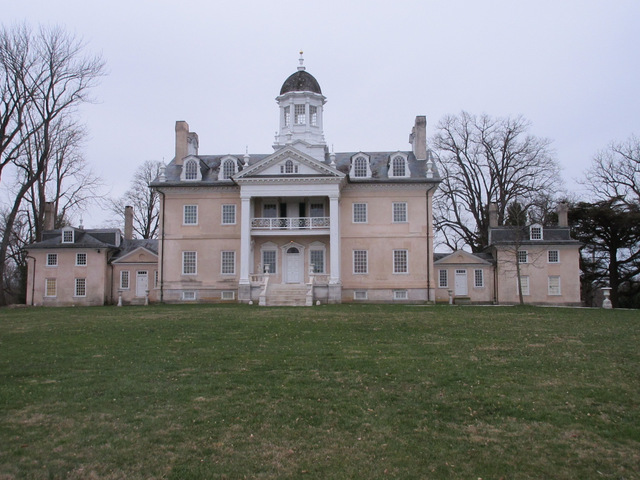
Hampton Mansion in Towson, Maryland
“There are very few houses in America on such a scale of significance as Hampton. Its great size is matched by the monumental qualities of its porticoes and domed cupola, and by its elaboration of detail in doorways, windows, and interior features, as well as by the layout of its extensive formal gardens. It represents the height of opulence in the moment just at the end of the Revolution and of the adoption of the Federal Constitution, and has survived entirely intact….I know of no other eighteenth century house of equal importance…”
The foregoing statement was made by Fiske Kimball in 1946 regarding Hampton Mansion as reported in Sprinkle’s Crafting Preservation Criteria (2014). Kimball is better known today as one of the founders of American architectural history.
On a rainy Saturday in March, a busload of public historians visited Hampton National Historic Site as part of the annual meeting of the National Council on Public History (NCPH). Each came to be introduced to how the National Park Service (NPS) interprets the former plantation. Active from 18th-through the mid-19th centuries, at one time the plantation encompassed 25,000 acres. Working the plantation were hundreds of enslaved individuals, indentured servants, and local workers and craftsmen. Upon arrival, the historians were greeted by the NPS Chief of Interpretation, Ranger Vince Vaise, and Ranger Anokwale Anansesemfo, a specialist in the interpretation of enforced servitude by both Blacks and Whites at the plantation as a result of policies of slavery and indentured servitude.
Mule Barn at Hampton Mansion
The rangers led participants on a 2 1/2 hour tour that was memorable for the attention it paid to how the NPS interprets the mansion’s buildings and grounds to the public. Included in the tour were the mansion, the overseer’s home, and the quarters of the enslaved laborers the overseer controlled. How the National Park Service interprets the story of enforced servitude at the mansion– both enslaved Blacks and indentured Whites–was explained by Ranger Anokwale, who engages in just such interpretation at the historic site when educating the public.





